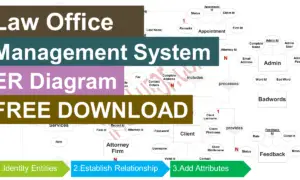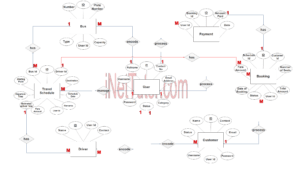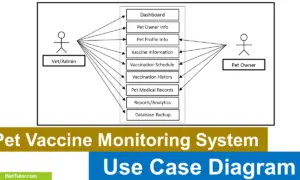Job Portal System ER Diagram
Job portal system is an online platform for job seekers and companies who are looking for applicants. Application and the process of hiring are done online which benefit the both parties.
In the development of an information system, the project always starts in a form of a blue-print; in our case we will be designing the blue-print of job portal system in a form of entity relationship diagram.
We will create and explain the process of making the entity relationship diagram of job portal system.
Let’s start from the symbols used in the ER Diagram.
Entity is represented by the rectangle shape. The entity will be our database table of Job Portal System later on.
Attribute is represented by the oval shape. This will be the columns or fields of each table in the Job Portal System.
Relationship is represented by diamond shape. This will determine the relationships among entities. This is usually in a form of primary key to foreign key connection.
We will follow the 3 basic rules in creating the ER Diagram.
- Identify all the entities.
- Identify the relationship between entities and
- Add meaningful attributes to our entities.
Step 1. In the job portal system we have the following entities
- User Account
- Job Category
- Job Location
- Job Information
- Company Information
- Applicant Information
- Application Details
We will now draw the entities and it will be represented by a rectangle shape.
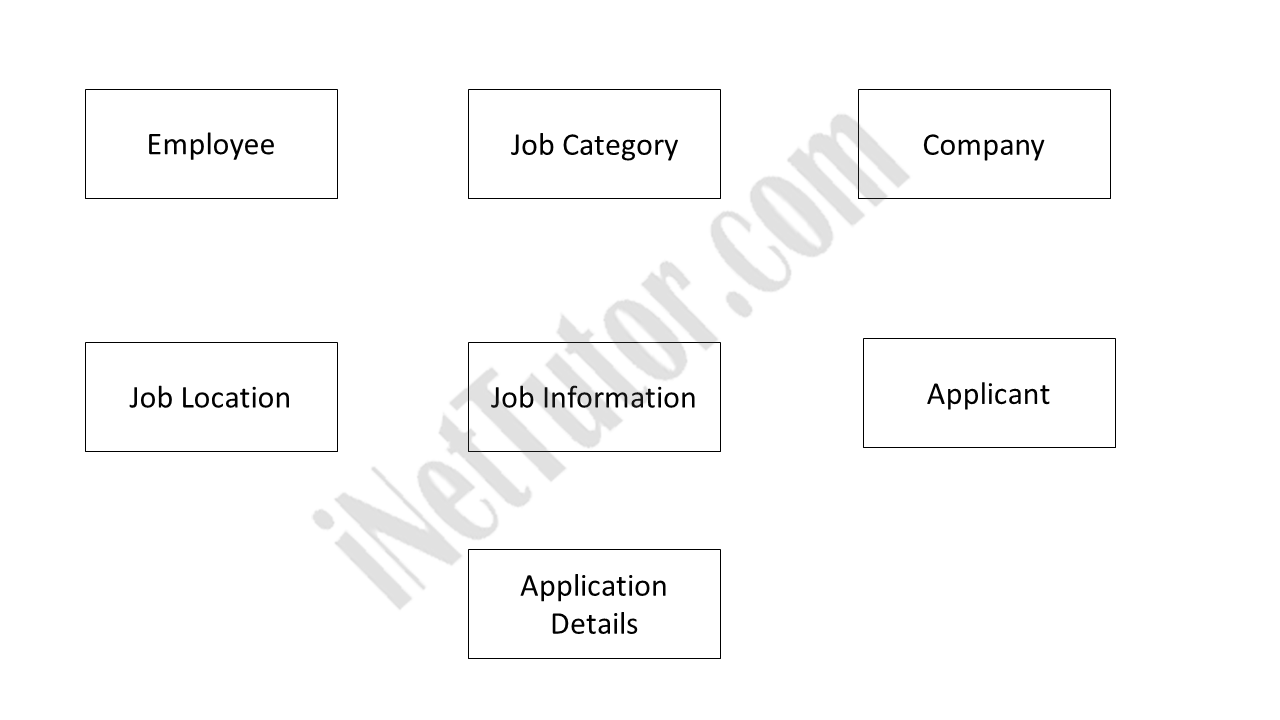
Step 2. After we have specified our entities, it is time now to connect or establish a relationship among the entities.
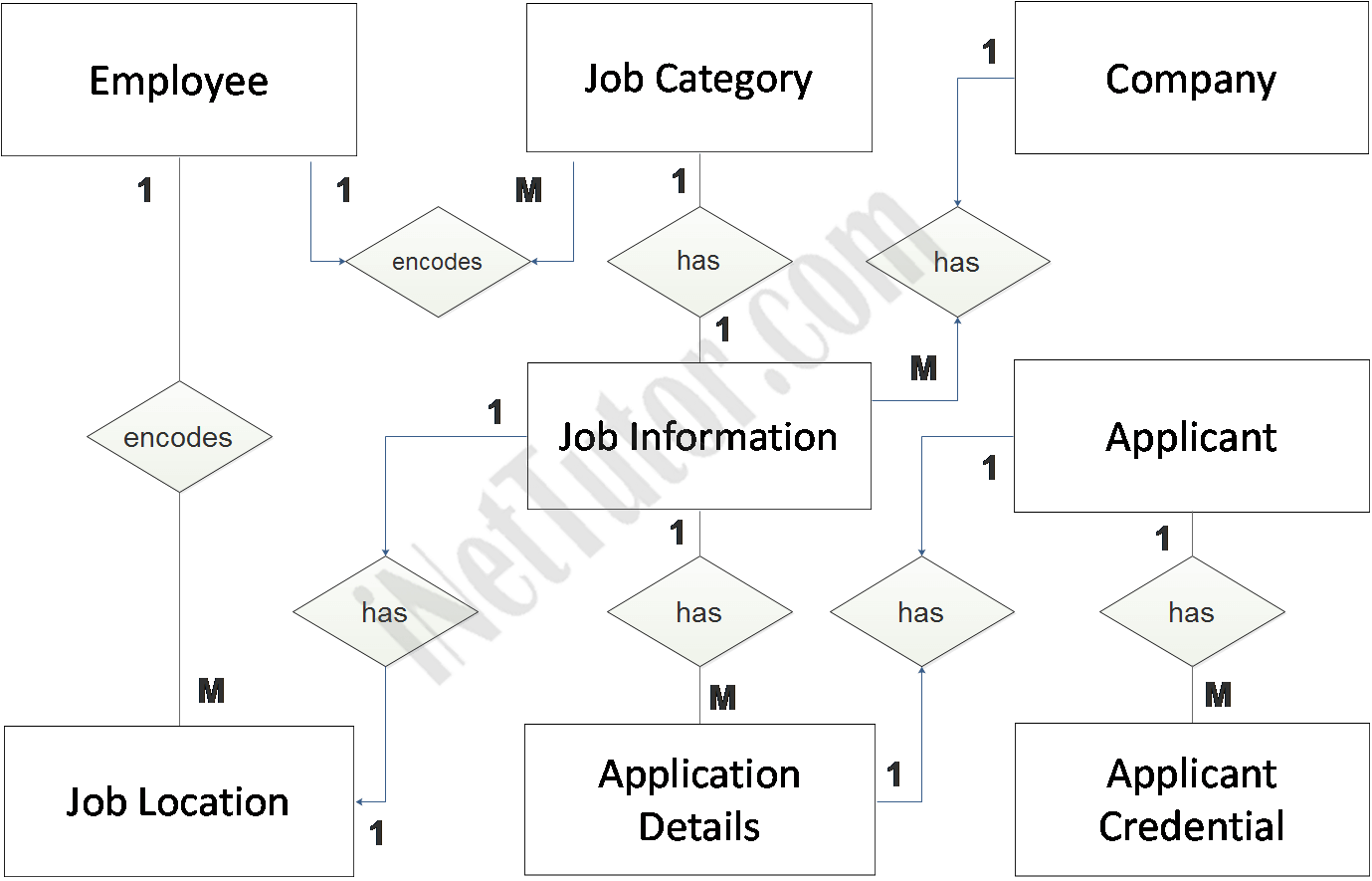
- employee encodes multiple job location (1 to many relationship)
- employee encodes multiple job category (1 to many relationship)
- job information has only 1 job location (1 to 1 relationship)
- job information is specific to a job category (1 to 1 relationship)
- a company has multiple job hiring (1 to many relationship)
- an applicant can pass 1 application per job information (1 to 1 relationship)
- an applicant can upload 2 or more applicant credentials (1 to 1 relationship)
- a job opening can accept multiple job application (1 to many relationship)
Step 3. The last part of the ERD process is to add attributes to our entities.
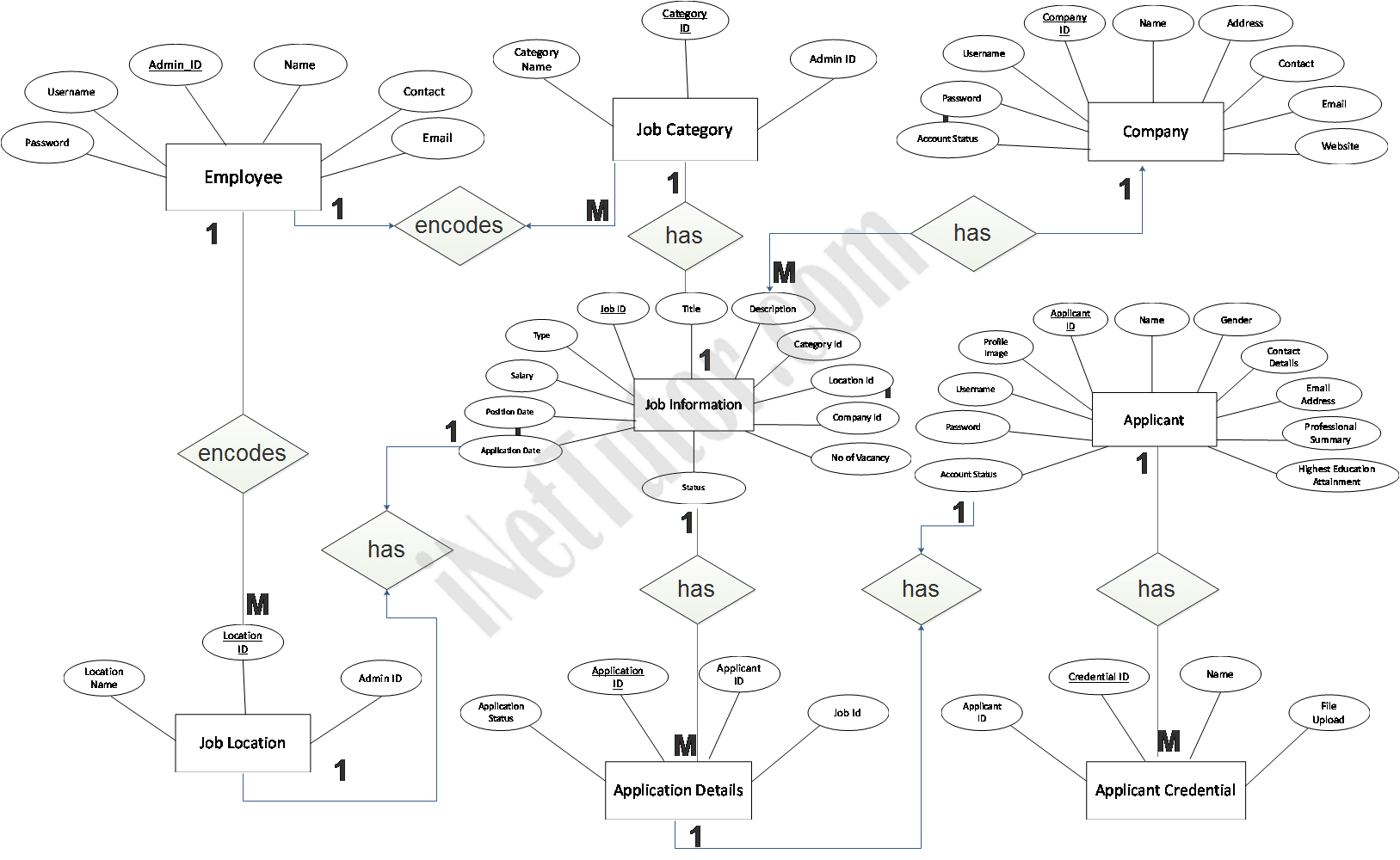
- Employee Entity has admin id (primary key), name, contact, email, username and password
- Job Category Entity has category id, category name and admin id (foreign key)
- Job Location Entity has location id (primary key), location name, admin id (foreign key)
- Job Information Entity has job id (primary key), job title, job description, job category id (foreign key), company id (foreign key), job type, job salary, job posting date, last application date, no of vacancy, job status
- Company Information Entity has company id (primary key), company name, company address, company contact, company email, company website, username, password, account status
- Applicant Information Entity has applicant id (primary key), applicant name, gender, contact details, email address, professional summary, highest educational attainment, profile image, username, password, account status
- Application Details Entity has credential id (primary key), credential name, file upload, applicant id (foreign key)
Note: all attributes with underline represents the primary key of the entity or table.
The next step is to convert the plan designed on ER Diagram into the actual database, please search for the Job Portal Database Design article which was already posted.
Contact us on our facebook page for the softcopy of the Job Portal ER Diagram.
You may visit our facebook page for more information, inquiries and comments.
Hire our team to do the project.
